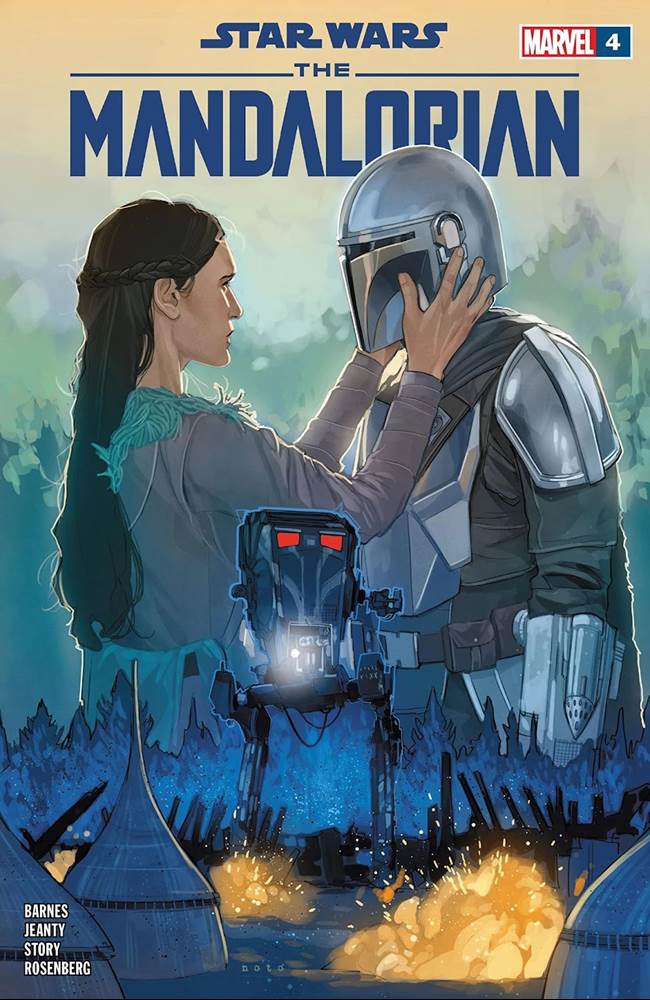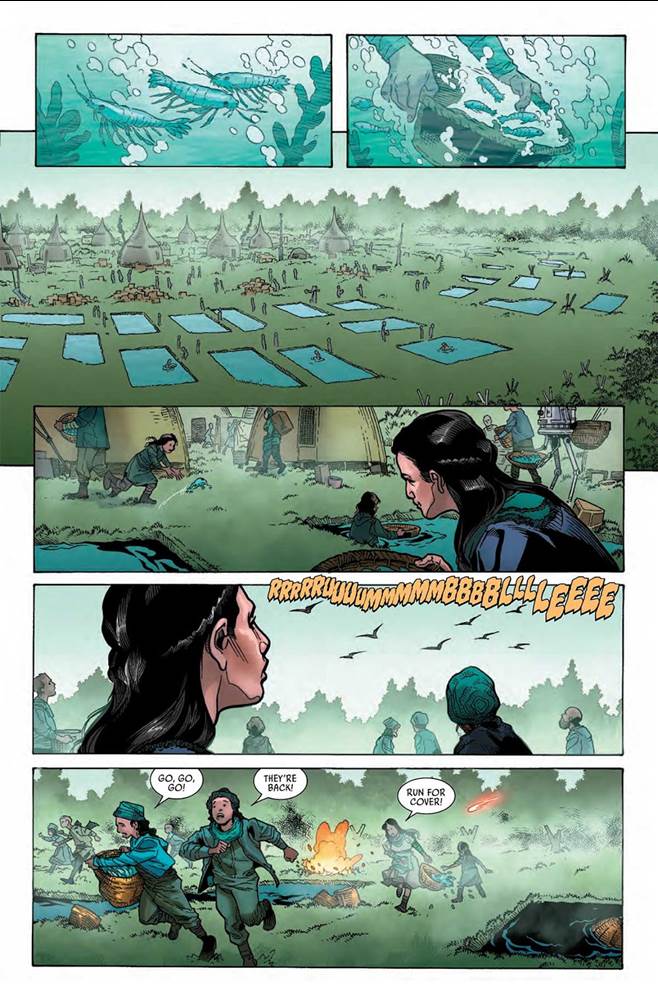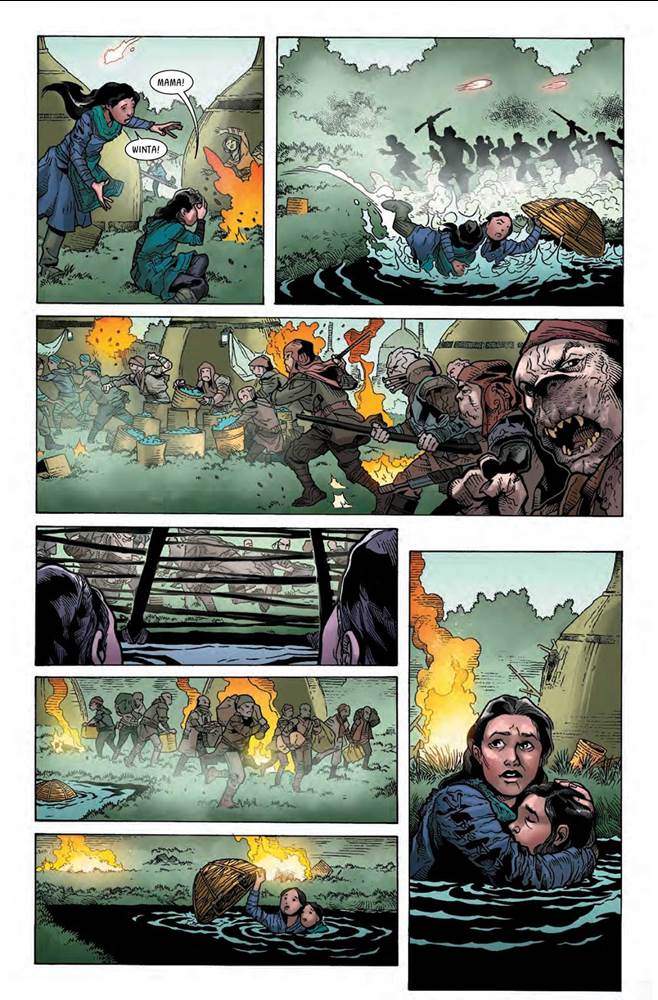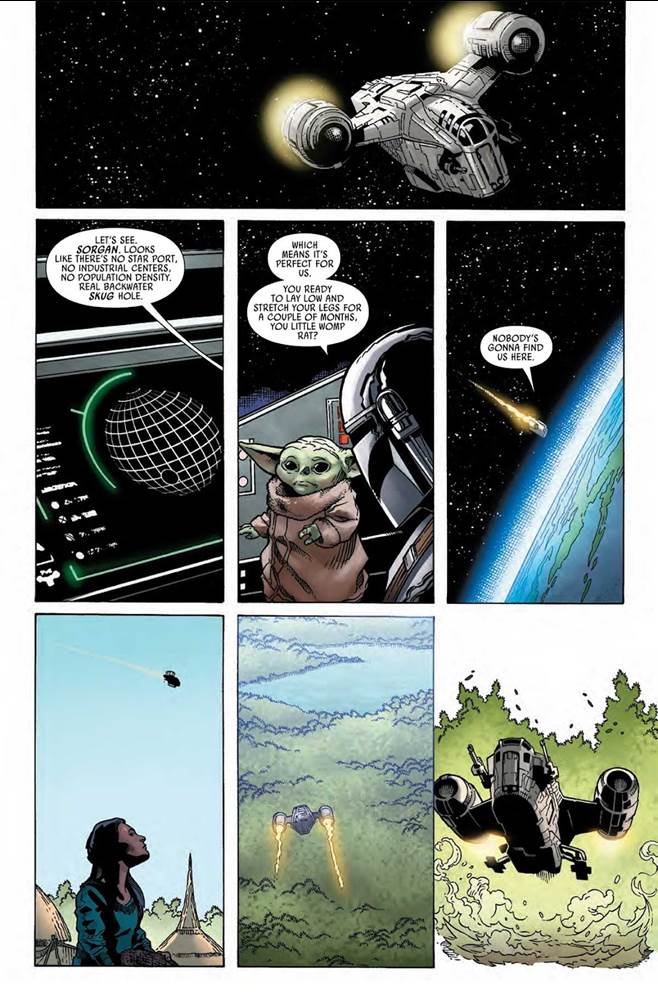It’s been over a year and a half since Lucasfilm parted ways with actress and MMA fighter Gina Carano, leaving the fate of her Star Wars character Cara Dune in indefinite limbo. Dune hasn’t popped up in any Star Wars media since, including television series, books, or comics– until today, that is.
Star Wars: The Mandalorian #4 is an adaptation of the first-season episode entitled “Sanctuary,” which just so happened to be mercenary Cara Dune’s introduction into the smash-hit live-action Disney+ series. I actually kind of forgot about that fact until I approached the scene in the comic where she initially pops up on the planet Sorgan. Then I started to wonder how exactly Marvel Comics– not to mention writer Rodney Barnes and artist Georges Jeanty– would handle the still-heated controversy surrounding Gina Carano and her character.
The answer, as I probably should have guessed, is that the comic book (being a fairly straightforward adaptation of The Mandalorian TV series, as always) doesn’t really address the debate at all, nor does it make a big deal either way about Cara Dune’s presence in issue #4. Even the likenesses of the character, which both often resembles Gina Carano and also occasionally sort of doesn’t, is pretty noncommittal either way. The whole thing is presented very matter-of-factly, which ultimately was probably the smartest choice about how to handle this aspect of the comic. For those who may not recall, “Sanctuary” is the episode where the title character and his new companion (known only as The Child by this point) end up on Sorgan to slip away from the fuss caused by their narrow escape from Nevarro. They meet Cara Dune, a former rebel shock trooper, in an alehouse, then team up with her to protect a small village from raider attacks, bringing down an ex-Imperial AT-ST walker in the process. The episode was itself inspired by the Akira Kurosawa film The Seven Samurai, which has been adapted via A Galaxy Far, Far Away several times over at this point (in the original Marvel Comics Star Wars run and The Clone Wars animated series), which is why it feels so familiar.
“Sanctuary” isn’t my favorite episode from The Mandalorian’s first season (I might go so far as to say it’s my least favorite) but the sequential-art version works just fine, except for a few little moments I noticed that don’t quite translate very well from screen to page. I would say that’s the job of the writer and artist– to make sure each beat works in comic form, or to excise them if they don’t– but the rest of the issue around those moments click sufficiently enough that they only registered as minor bips on my quality radar. I still think Jeanty’s art is hitting the target almost perfectly, encapsulating the feel and tone of the series without leaning too far in either the hyper-realism or cartoonish directions. The climactic battle scene in this installment, especially, carries with it all the unbridled excitement and visceral thrill of having watched that sequence in live-action. This marks the halfway point of this run of The Mandalorian comic book, and as we approach some of the best (in my opinion) episodes from season one, I can’t wait to see how this creative team handles adapting them.
Star Wars: The Mandalorian #4 is available now wherever comic books are sold.




